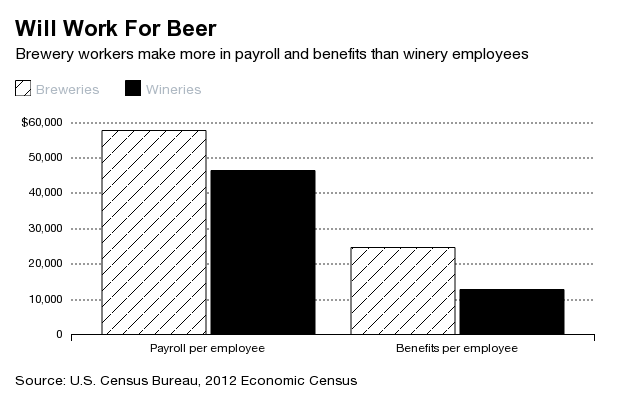Beer Is Better Than Wine for the American Worker
Anyone whofs spent much time in the beer aisle of their local supermarket,
liquor store, or bodega has probably noticed that the number of U.S. beer makers
has multiplied in recent years. A new Census Bureau report confirms
it: There were 869 breweries in the U.S. in 2012, more than double the
number in 2007. Wine drinkers have also enjoyed the fruits of an increase in
producers, with the number of U.S. wineries jumping 34 percent over the same
period.
Not all adult beverages are equal—at least not in the eyes of the American
worker. On average, U.S. breweries paid higher salaries and benefits than
wineries did in 2012.

Breweries also paid a higher percentage of their sales in taxes. Still,
therefs plenty that the data doesnft tell us. The governmentfs
definition of a winery includes businesses that grow grapes and manufacture
wine. That means the vino workforce probably counts a lot of low-paid
agricultural workers. Breweries buy their grains from suppliers, so the people
who harvest the raw materials arenft captured on beer makersf payrolls. Nor
does the Census explain how mega-breweries
such as Anheuser-Busch InBev (BUD) or Molson Coors Brewing (TAP) affect pay in the beer business.
Still, the data send a clear-enough prompt to tipplers who believe their
consumer choices should not only taste great but also support the U.S. economy:
Drink beer.